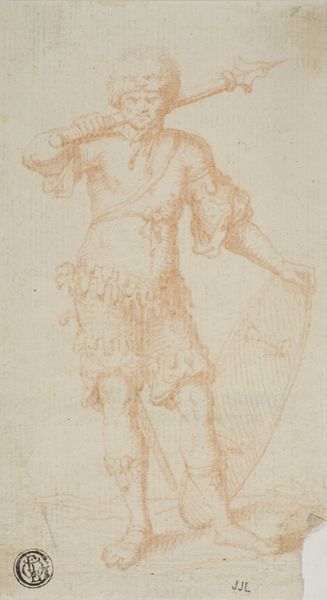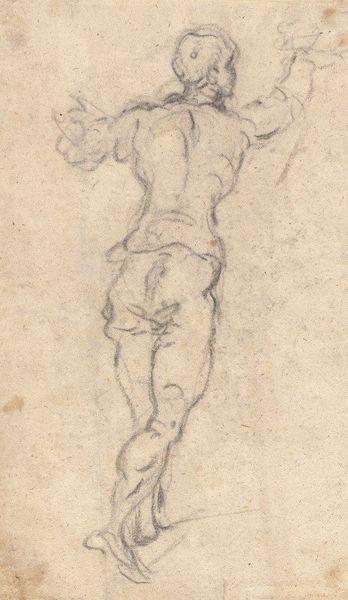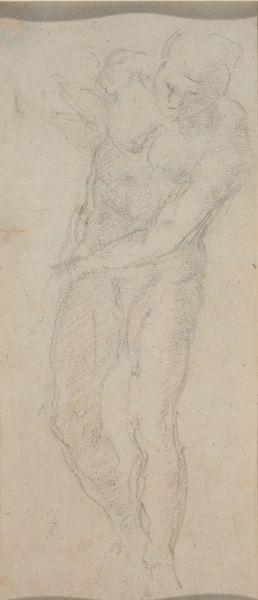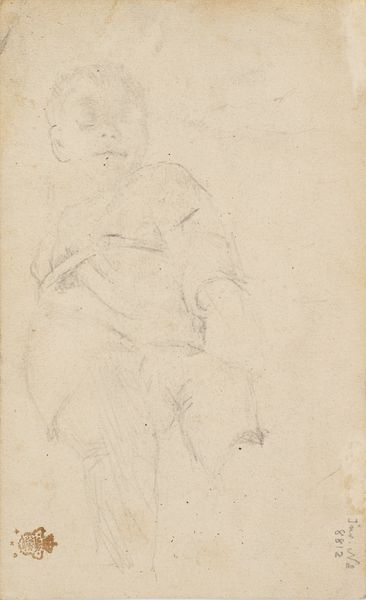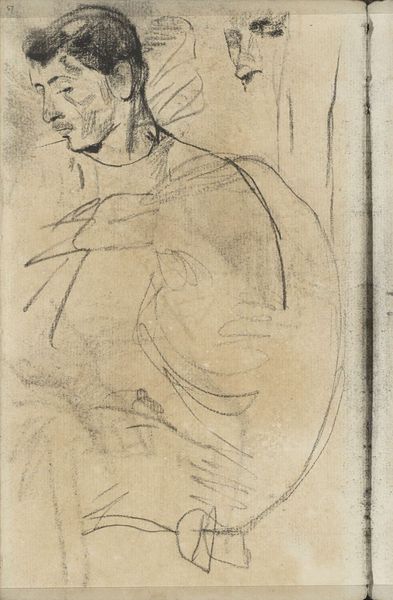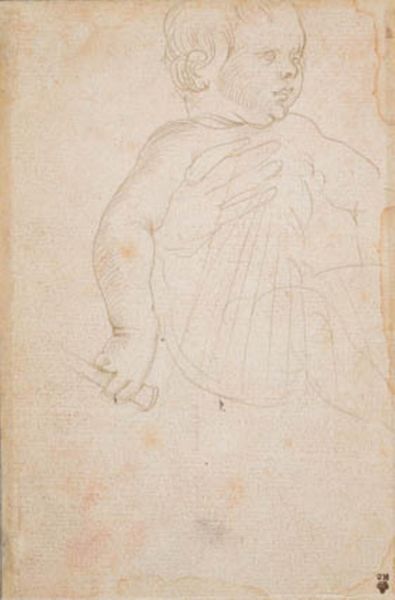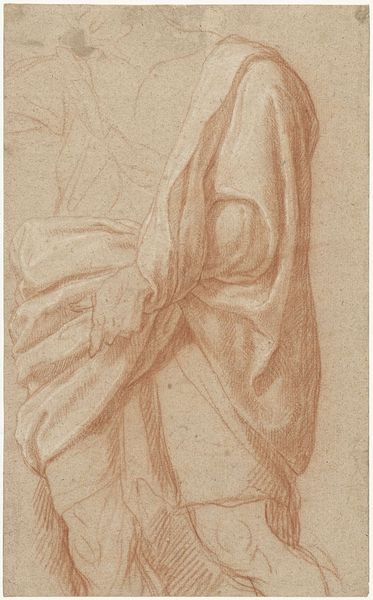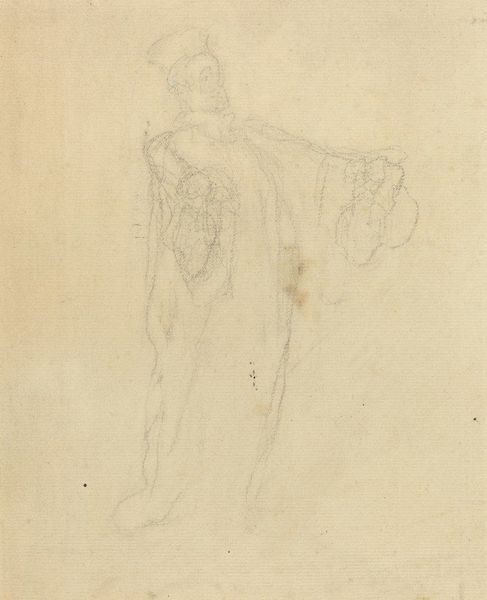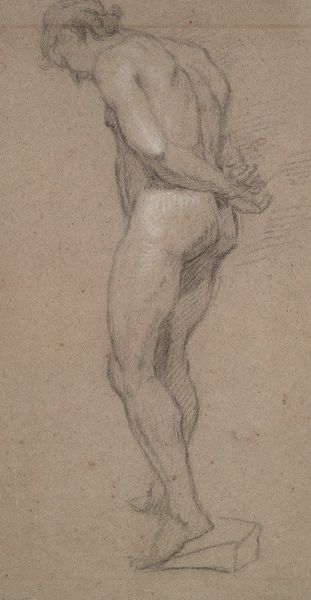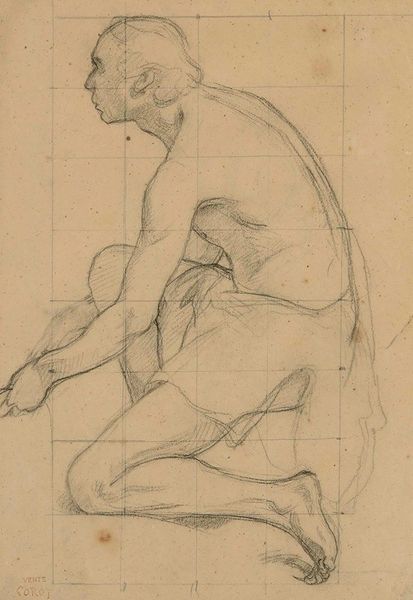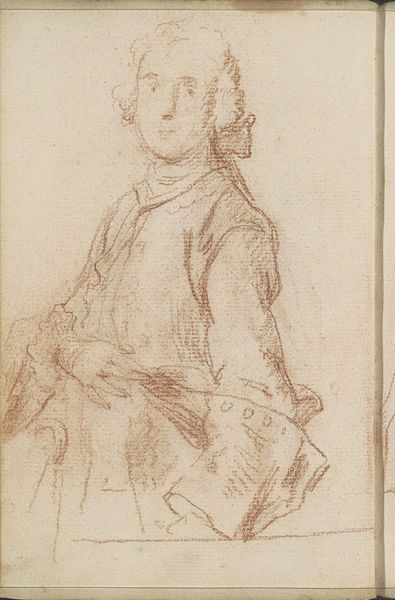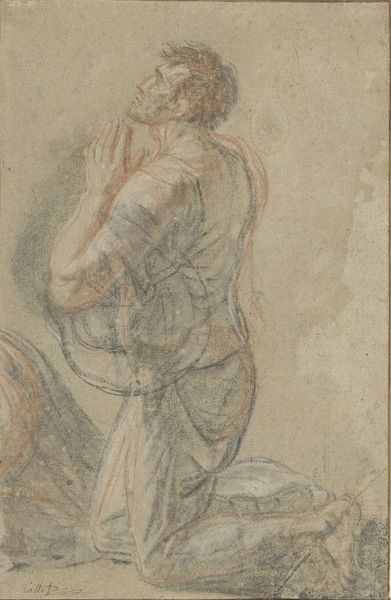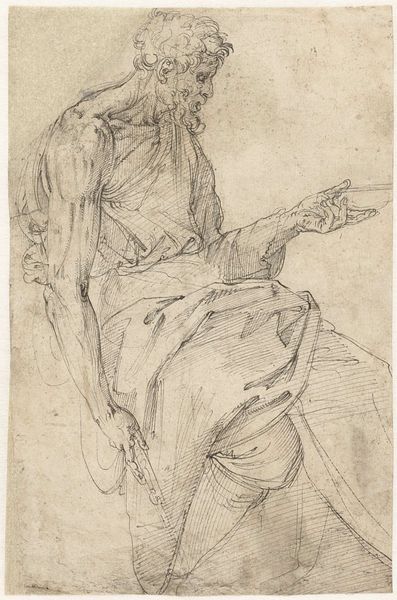
drawing, pencil, graphite, charcoal
#
portrait
#
pencil drawn
#
drawing
#
charcoal drawing
#
figuration
#
pencil
#
graphite
#
charcoal
Dimensions: 6 1/4 x 2 7/8 in. (15.88 x 7.3 cm) (image)
Copyright: Public Domain
Curator: This is Anton Krafft's "Woman Holding Basket," a graphite, charcoal, and pencil drawing from the 19th century, currently residing here at the Minneapolis Institute of Art. Editor: It's stark, almost skeletal, a quick study perhaps? The visible strokes make the figure appear almost ephemeral, like a ghost caught in action. Curator: Precisely, it reads like a study, allowing us insight into Krafft’s working methods. Look at the paper; its age suggests it wasn’t intended as a final, polished work, more a means to an end. And the tools themselves - humble pencils and charcoal. What does that tell us about artistic production at the time? Not everything needed to be rendered in oils to possess value or skill. Editor: The social context, too. A woman carrying a basket – who was she? Was she a laborer, a servant? The sketch denies her individual identity, reducing her to the form of a worker, burdened, faceless. It brings to mind larger questions about women's labor during this period. Curator: I agree there’s a social narrative at play. However, focus on the drawing itself, the artistry with humble material: a readily available and easily transportable medium. Consider how Krafft understood human form using only rudimentary tools. Editor: It's difficult to separate the technique from its implications, isn’t it? Even a quickly rendered sketch reflects a world of labor, of bodies put to specific tasks. Look at her posture: the twist of her torso, the supporting arm. It's a representation of daily life and the invisible work done by so many women to keep households and communities running. Curator: Fair, the implications extend beyond the artistic realm. It raises vital questions around class and representation, especially the means through which we access, consume, and indeed assign artistic worth. Editor: Ultimately, even in this simple drawing we encounter a narrative far more complex than its materiality suggests. The artist’s labor meeting the historical narratives surrounding its subject. Curator: Yes, precisely: by understanding materials and manufacture we find points for a better social understanding too.
Comments
No comments
Be the first to comment and join the conversation on the ultimate creative platform.
